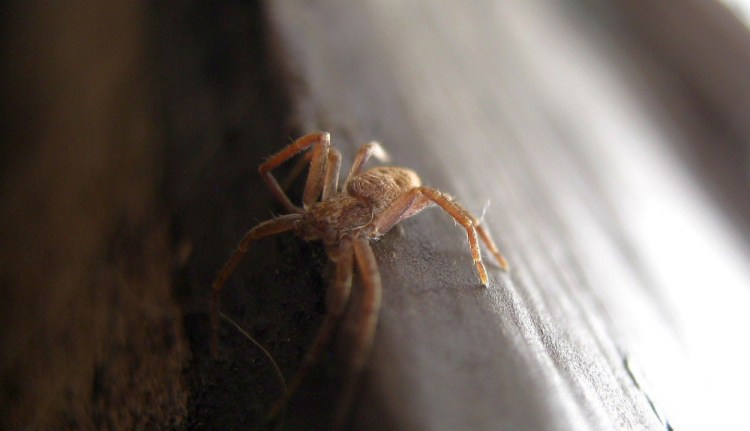April 7. Two feet of snow still insulating the yard and woods here in Troy. Somewhere out there is a whole underworld waiting for spring. And by that I mean, specifically, spiders.
Spiders, like insects and reptiles, are cold-blooded, or ectothermic, and have evolved ways of living through widely varying temperatures. About 85 percent of overwintering spiders, it turns out, spend the coldest months under leaf litter. They pull their legs in to their bodies, and their metabolisms slow way down to conserve heat. In fact, spiders are one of the creatures whose ability to live in widely varying body temperatures is so pronounced that they have a classification of their own: poikilothermic.
In deep cold, the snow itself actually serves as insulation and keeps a spider’s little winter leaf shelter at around 32 degrees. Researchers have found that air temperature even as low as minus 40 hardly affects spiders under snow.
Some spiders can just flat out withstand the cold by their body chemistry. The mechanism is not well understood, but the hemolymph, or circulating fluid, in some spiders contains glycerol, which in association with certain proteins acts like an antifreeze. Apparently many species of garden spider can resist freezing to death even when exposed to the cold as low as minus 4 Fahrenheit.
Another way spiders survive the winter is by laying eggs in late summer or fall and bundling them into a silk cocoon where they overwinter and hatch in spring. Some spider eggs can remain viable in temperatures as low as minus 11, according to the researchers.
In our part of the world, the fairly common goldenrod crab spiders (Misumena vatia), which you can see on sunny summer days patrolling flowers for insect meals, lay their eggs in late summer. The spiderlings hatch out in the fall, overwinter in the ground, go through a molt in May and then spend the one full summer of their lives eating bees and producing the next batch of spiderlings.
A fairly common orb weaver, the cross spider (Araneus diadematus), mates during late summer. The female then withdraws into her nook, spins a cocoon of fairly complex design, and lays her eggs in it. Within a few days of laying the eggs, she dies. The spiderlings hatch out in the spring and promptly throw out lines of fine silk which the wind grabs and carries them “ballooning” off to their summer of life.
The big, black and yellow garden spiders (Argiope aurantia) often seen at the center of their webs in brush or the kitchen window live about one year in our part of the world. The females lay their eggs in a round cocoon among fallen autumn leaves. The males apparently die soon after mating, and in colder places like Maine, the females usually die in the first hard frost. The spiderlings hatch out around then, but overwinter in the egg sac and emerge in spring.
Some species of wolf spiders (Lycosidae), who are hunters, mate in late summer and then the females overwinter in ground shelters or in a building, some still actively hunting even in sub-freezing temperatures. They then spin a cocoon for their eggs in May, and the little spiders hatch in early to mid-summer. They mature relatively slowly, overwintering in the ground or your house and reaching adulthood the next summer. The males don’t seem to live beyond the first summer of their maturity, but the females are believed to live sometimes up to three years beyond their first adult summer.
Common house spiders (Achaearanea tepidariorum) by and large don’t struggle with cold the way most other spiders do. They live in your house, often for years. You’ve probably seen them with their classic big butts in their corner cobwebs, or maybe just their gray, papery-looking egg sacs hanging in the web.
The snow has long overstayed its welcome (if it even had any at your house), but it’s slowly receding, and any minute now the underworld will emerge for the summer onslaught.
Dana Wilde lives in Troy. His writings on the curiosities of his backyard are collected in “The Other End of the Driveway,” and he is a contributor to “Pluto: New Horizons for a Lost Horizon” now available from North Atlantic Books. You can contact him at naturalist1@dwildepress.net. Backyard Naturalist appears the second and fourth Thursdays each month.
Send questions/comments to the editors.




Comments are no longer available on this story